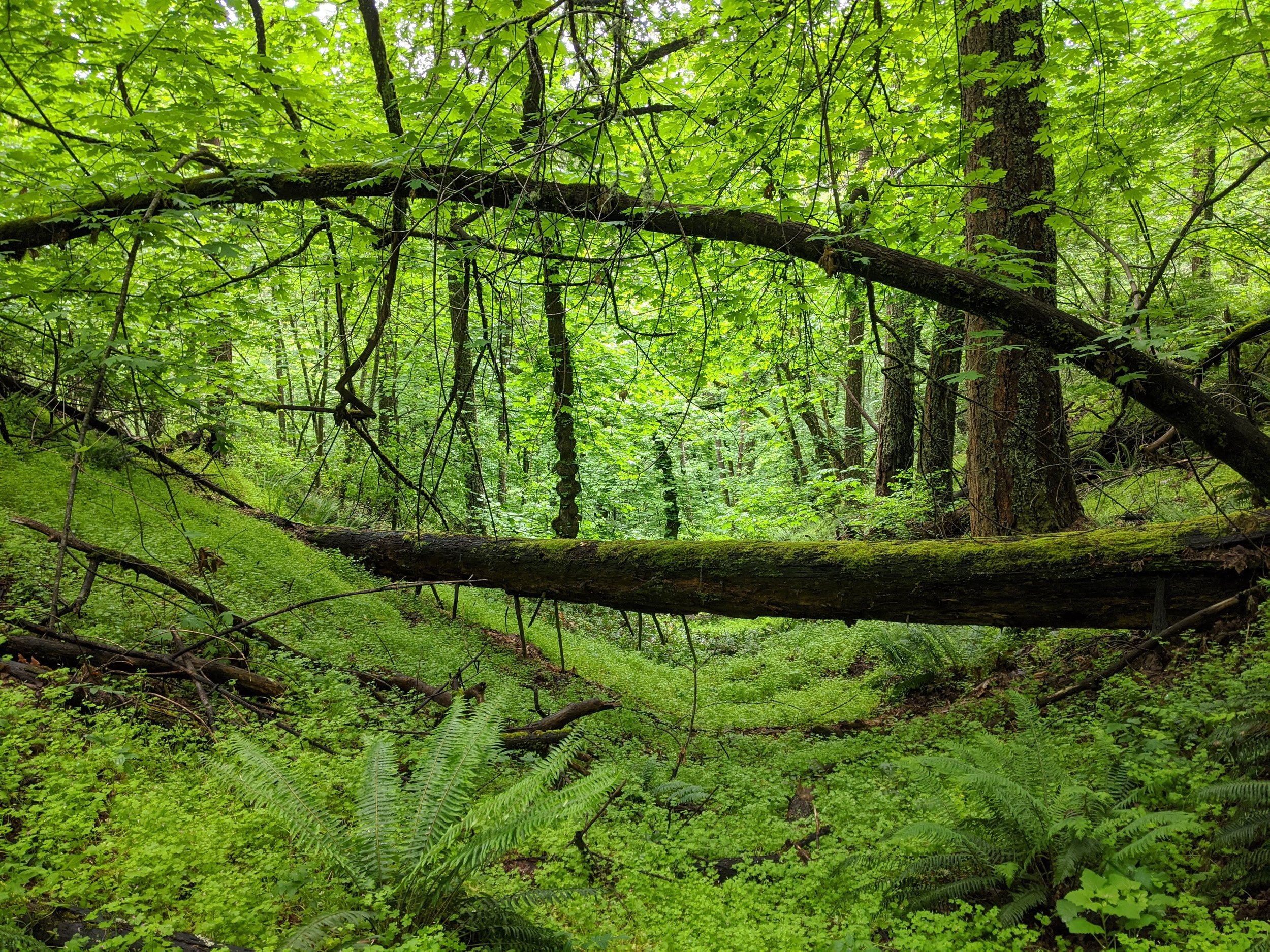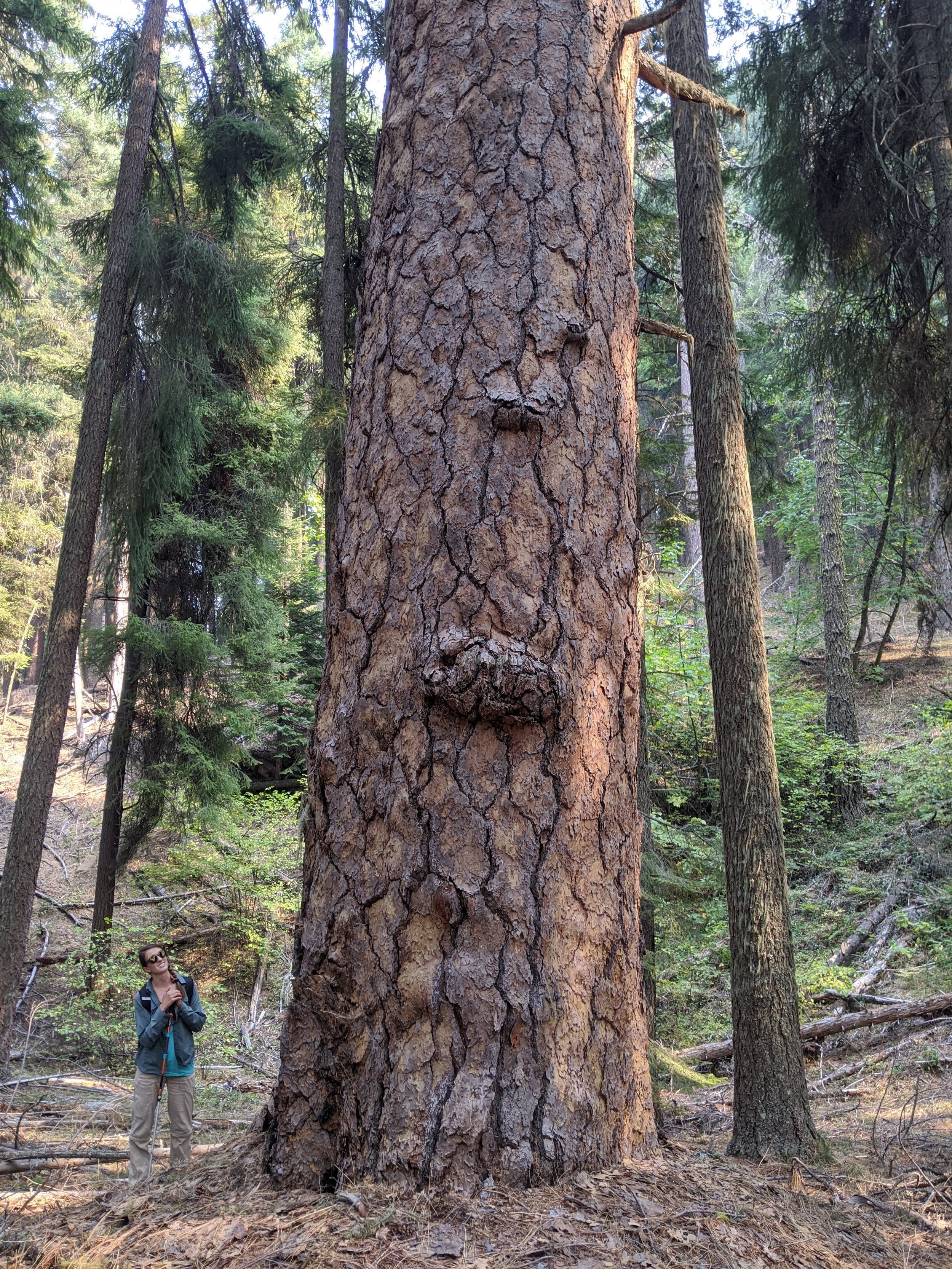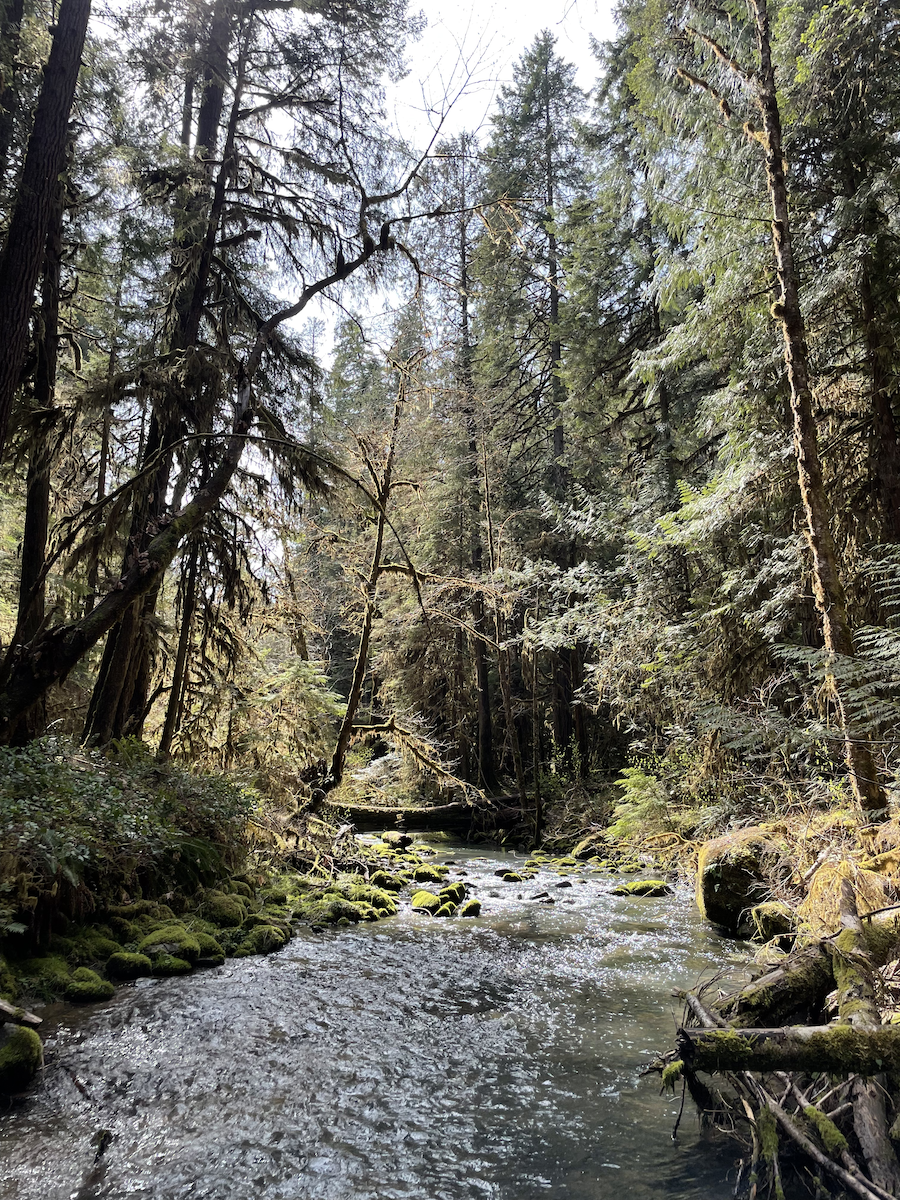What is an Old-Growth Forest?




Massive trees, ferns covering large downed logs, moss falling from the sky. These are a few images that come to mind when you think of an old-growth forest. You may even spot a flying squirrel, a Humboldt Marten, or a moss loving salamander. Being in a forest that is hundreds of years old is a memorable experience. But what exactly is an old-growth forest?
Old-growth forests are dominated by ancient trees and have been shaped by natural processes over the course of hundreds of years. These dynamic forest ecosystems consist of a diversity of plant and tree species, lack signs of destructive human activities, and provide an important home for wildlife.
There are several types of old-growth forests throughout the Pacific Northwest. The amount of rainfall a given forest receives greatly influences the type and size of the trees. In the wet, western part of the region, you will find old-growth Douglas fir trees that can be ten feet thick and hundreds of feet tall. The drier portions of the Klamath-Siskiyou region there are spectacular old-growth forests with the most conifer diversity in the nation. There are over 30 different species of cone bearing trees! Old-growth Ponderosa pines, mountain hemlock, Port Orford cedars, and Douglas fir can be found here.
What defines an old-growth forest?
Big trees
Old, big trees are the main structures of old-growth forests. Trees bring nutrients into the forest through photosynthesis which is eventually released back into the ecosystem.
Large snags (standing dead trees)
When big trees die from natural causes such as disease and insect damage, they are used by many different kinds of animal species for shelter and food sources.
Large fallen trees on the forest floor
Over many decades, fallen trees decay on the forest floor and become homes for many living creatures such as; carpenter ants, centipedes, salamanders, and shrews. Mushrooms grow on the rotting trees, and eventually the rotten trees turn into nurse logs, as young trees grow on top of them.
Multi layered canopy
An old-growth forest has so many layers of branches that the canopy is essentially continuous. Smaller trees spread their branches through spaces between big tree branches. Low lying shrubs create another layer. This structural complexity creates many unique microhabitats — areas with different levels of sunlight, moisture, and other resources.
Old-growth forests are home to many rare and endangered plant and animal species, such as the Northern spotted owl, marbled murrelet and Pacific fisher. This rich array of species – or biodiversity – makes old-growth forest ecologically significant, providing habitat for species that are not found anywhere else on earth.
Most of the old-growth forests that remain today in Oregon are on public land managed by the U.S. Forest Service and Bureau of Land Management. While some of these trees are protected in Wilderness Areas, most of the old-growth forests are still targeted for timber extraction. Logging old-growth reduces biodiversity in forests and affects the plant and animal species that depend on them for survival.
